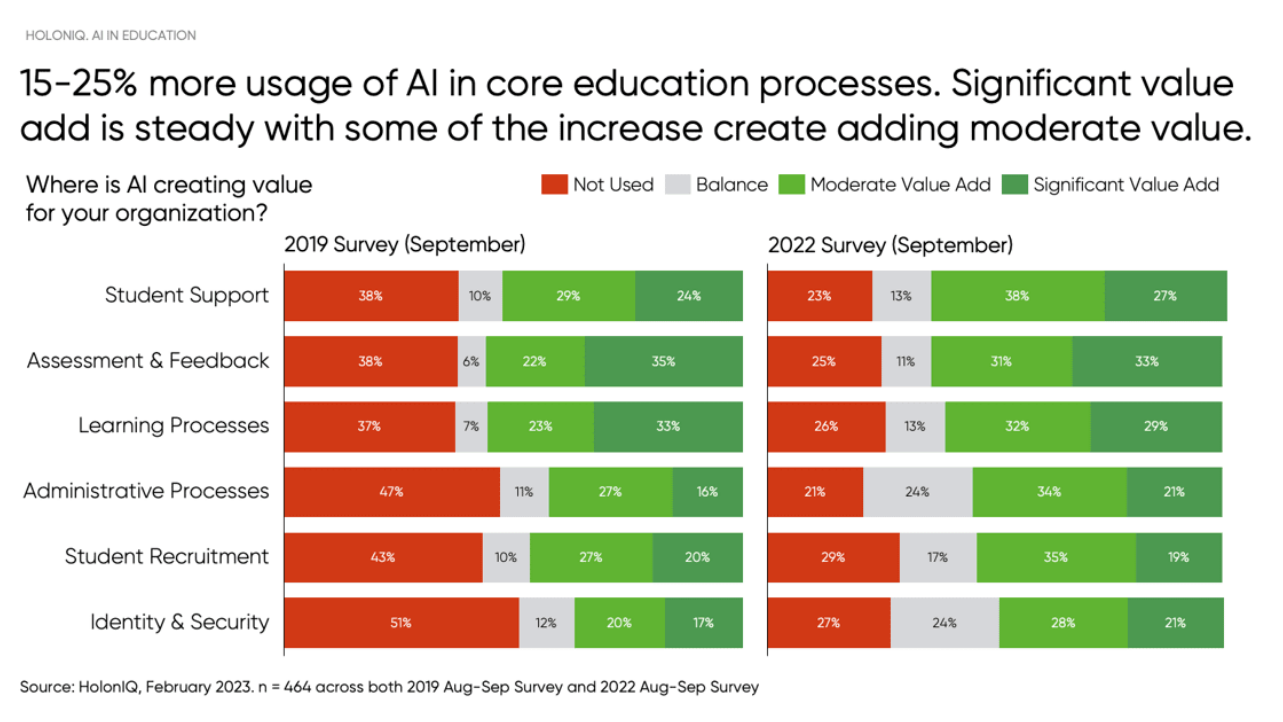Ricardo Jiménez is a COO & Head of Product at Arukay. He brings over 15 years of experience as a product manager, specializing in the creation of digital products. With 8 years dedicated to the field of EdTech, he has developed a deep understanding of the education industry and its evolving needs. As an AI enthusiast, he is constantly immersing himself in the study of this transformative technology, seeking innovative ways to integrate it into the products he builds. He holds an executive MBA, has been a co-founder of three companies, and is a start-up advisor.
In the ever-evolving digital landscape, artificial intelligence (AI) has emerged as a groundbreaking technology with the potential to reshape various aspects of our lives. Education, in particular, stands to benefit greatly from the integration of AI. Instead of fearing the rise of AI, the education system should embrace it, recognizing the immense opportunities it brings. This article explores how AI is changing education and highlights the need for educators to adapt to this new era.
1. Embracing AI to Stay Ahead:
The rapid advancement of AI has brought about significant transformations in various industries, revolutionizing the way we live and work. To ensure that our education system remains relevant and prepares students for the future, it is imperative that we embrace AI and integrate it into our curriculum effectively.
By embracing AI in education, we can equip students with the necessary skills and knowledge to thrive in an AI-driven world. This means providing them with opportunities to learn about AI concepts, algorithms, and applications, as well as fostering critical thinking, problem-solving, and creativity.
In an AI-driven world, individuals who possess the ability to harness the power of AI will have a competitive advantage. They will be equipped to analyze vast amounts of data, automate tasks, and make informed decisions based on insights derived from AI algorithms. These skills will be highly sought after in the job market, as organizations across industries increasingly adopt AI technologies to streamline processes and drive innovation.
According to a recent report by PwC, the adoption of AI is expected to have a significant impact on the job market. It is estimated that by the early 2030s, around 38% of jobs in the United States could be at high risk of automation. This underscores the urgency of preparing the next generation for the job market of the future.
2. Fostering Critical Thinking and Creativity:
Rather than viewing AI as a threat to traditional education, it should be seen as a tool to enhance learning outcomes. By shifting the education system’s focus towards nurturing critical thinking and creativity, students can be encouraged to leverage AI technology effectively to address intricate problems and overcome real-world challenges.
One good example of how AI is being implemented in education is AlphaFold, an advanced AI system that accurately predicts 3D models of protein structures. University teachers are harnessing the power of AlphaFold2 to introduce students to the potential of artificial intelligence in understanding structural biology, providing them with a firsthand experience of how AI can revolutionize scientific research and discovery. By incorporating AI tools like AlphaFold into the learning process, students can develop a deeper understanding of complex subjects and gain practical skills that are highly valuable in the modern world.
3. Flipping the Classroom with AI:
One of the most effective ways to integrate AI into the classroom is by flipping the traditional teaching model. Instead of teachers providing step-by-step instructions on problem-solving, students can leverage AI to find solutions on their own. This approach empowers students to actively engage with the subject matter, develop problem-solving skills, and build confidence in their abilities. Moreover, this method enables students to share their unique approaches with the class, promoting collaboration and diverse perspectives.
As mentioned by Josep Valor-Sabatier, Professor of Management of Information Systems Technologies at IESE University of Barcelona, “What you can’t do is ask students to write about quantum mechanics as homework. What you have to do is the other way around. Ask them to go home and find out what quantum mechanics is. Then, come to class, and I will randomly choose four or five students to present it.”
4. Empowering Educators with AI Tools:
AI not only benefits students but also has the potential to greatly assist educators in their daily tasks. Numerous AI-powered tools are available to help teachers streamline administrative duties, create personalized assessments, and enhance communication with parents. These tools can significantly reduce the time and effort required for administrative tasks, allowing teachers to focus more on student engagement and personalized instruction.
As mentioned in the research conducted by HoloIQ titled “Understanding Generative AI in Higher Education,” AI is already adding value in multiple ways to the education ecosystem.

Conclusion:
As AI continues to advance at an astonishing pace, the education system must adapt to leverage its transformative potential. Embracing AI in education does not mean replacing teachers; rather, it means empowering educators and students to excel in an AI-driven world. By embracing AI and fostering critical thinking, creativity, and collaboration, the education system can equip students with the skills necessary for success in the digital age. Moreover, by utilizing AI tools, teachers can streamline administrative tasks and focus on what they do best: inspiring and guiding students towards a brighter future. The integration of AI in education holds immense promise, and it is up to us to harness its power for the betterment of education and society as a whole.
References
- PwC. (2018). The impact of automation on jobs. Retrieved June 6, 2023, from https://www.pwc.co.uk/services/economics/insights/the-impact-of-automation-on-jobs.html
- DeepMind. AlphaFold. Retrieved June 6, 2023, from https://www.deepmind.com/research/highlighted-research/alphafold
- DeepMind. (2022, January 25). AlphaFold: A Solution to a 50-Year-Old Grand Challenge in Biology [Video]. YouTube. https://www.youtube.com/watch?v=iTCEj7g4XP0
- CNN. (2022, May 31). CNN en Español – Profesor pone a prueba el ChatGPT y cree que podría ser una herramienta escolar [Video]. YouTube. https://youtu.be/S3gZstTkYY8
- HolonIQ (2023, Feb 02)..Artificial Intelligence in Education. 2023 Survey Insights (holoniq.com) https://www.holoniq.com/notes/artificial-intelligence-in-education-2023-survey-insights.




